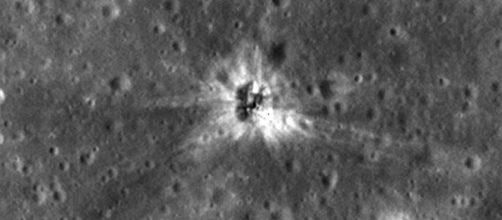Provided that the mission does not get rudely interrupted by a Second Korean War, the Korea Pathfinder Lunar Orbiter (KPLO) is scheduled to be launch in 2018, being that country’s first deep space expedition. According to Arizona State University, KPLO will be carrying ShadowCam, a special camera developed by Mark Robinson of ASU’s School of Earth and Space Exploration (SESE) and Malin Space Science Systems (MSSS). ShadowCam will search out ice and frost in the permanently shadowed craters at the lunar North and South Poles.
Ever since the Clementine Space Probe in the early 1990s, scientists have been aware of ice in the craters deposited over billions of years and kept in cold traps out of the reach of the sun.
Subsequent lunar orbiting probes have ascertained the billions of tons of ice may reside in these regions on the moon.
The discovery of ice on the moon has excited advocates of lunar settlements and deep space exploration. The ice can be melted down into water for drinking, bathing, and agriculture by future lunar colonists. The water can also be refined into hydrogen and oxygen, the components of rocket fuel, making the moon a giant fuel depot for spacecraft plying between Earth and cis-lunar space and to destinations beyond, such as Mars. Studies suggest that lunar rocket fuel will greatly simplify flights to Mars since they would not have to carry all the fuel they need directly from Earth.
ShadowCam is similar to a camera being taken on the Lunar Reconnaissance Orbiter but is much more sensitive and capable of making higher definition images. The two camera are almost identical, but ShadowCam has an imaging sensor that is 800 times more sensitive. The camera will observe craters with permanently shadowed regions throughout a year, taking note of any seasonal variations.
The device should give scientists a pretty good idea as to the true extent and distribution of the ice.
An accurate map of water ice on the moon would be imperative for any program of lunar exploration and settlement. The next step would be to insert landers and rovers to do prospecting and to test extraction technology. Much of the mining and refining of ice on the moon would likely be done by robots, either remotely controlled or autonomous.
President Donald Trump is keenly interested in returning to the moon, according to several media reports. His advisors have touted resource extraction and commercial partnerships as an integral part of such a program. Lunar Ice and the mapping of it will be the crucial first step on the path to the moon.

